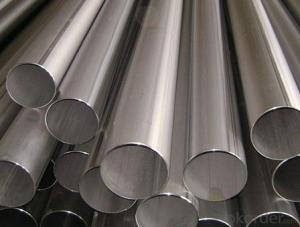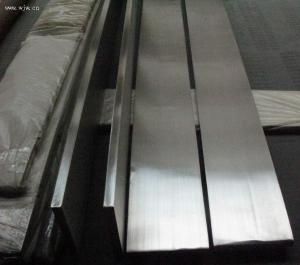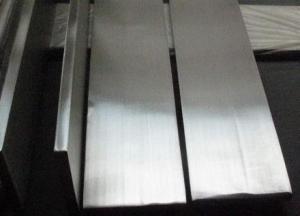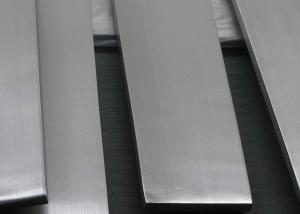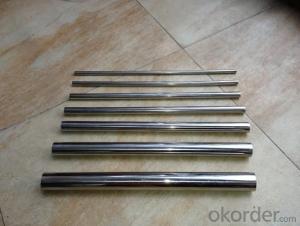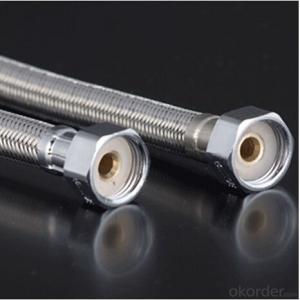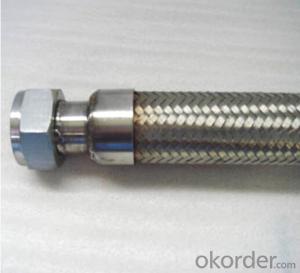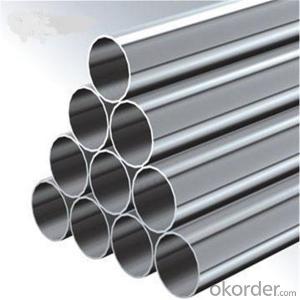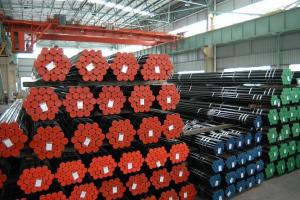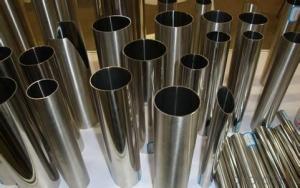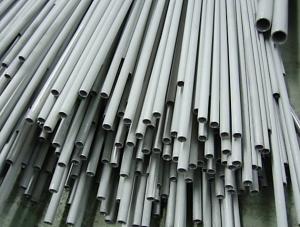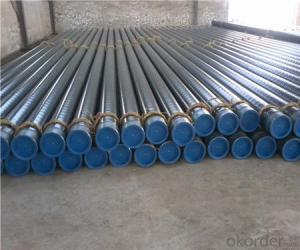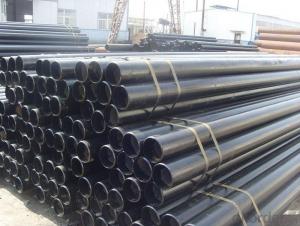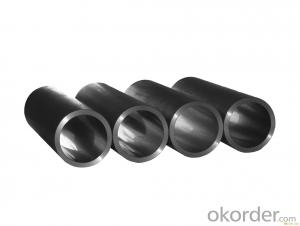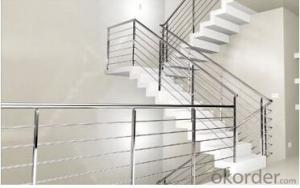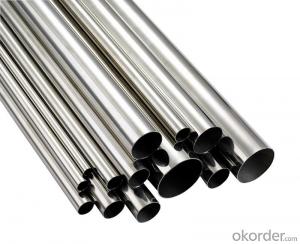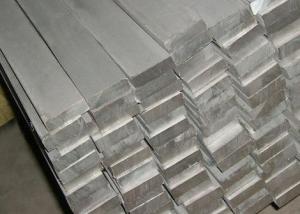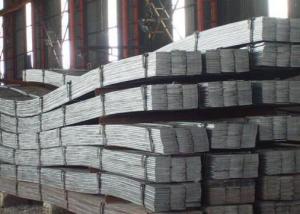ASME API 5L Seamless Stainless Steel Pipe
- Loading Port:
- Tianjin
- Payment Terms:
- TT or LC
- Min Order Qty:
- 25 m.t.
- Supply Capability:
- 10000 m.t./month
OKorder Service Pledge
OKorder Financial Service
You Might Also Like
We are company that have many years experience and professional manager team and engineer team and sales team, sure we will provide you high quality of pipe and professioanl service.
Seamless pipe possesses a hollow section and without seam around the strip steel. It is made with solid bar or steel ingot by perforating machine. As the facture process does not include any welding, seamless pipes are considered to be stronger and more durable. Generally speaking, seamless pipe has better pressure resistance and security than other classifications, and was usually more easily available than welded pipe.
2、Main Features of the Seamless Pipe:
• High working accuracy
• High strength
• Small inertia resistance
• Strong therming dissipine ability
• Good appearance
• Reasonble price
3、Seamless Pipe Specification:
Standard | GB, DIN, ASTM ASTM A106-2006, ASTM A53-2007 |
Grade | 10#-45#, 16Mn 10#, 20#, 45#, 16Mn |
Thickness | 8 - 33 mm |
Section Shape | Round |
Outer Diameter | 133 - 219 mm |
Place of Origin | Shandong, China (Mainland) |
Secondary Or Not | Non-secondary |
Application | Hydraulic Pipe |
Technique | Cold Drawn |
Certification | API |
Surface Treatment | factory state or painted black |
Special Pipe | API Pipe |
Alloy Or Not | Non-alloy |
Length | 5-12M |
Outer Diameter | 21.3-610mm |
Grade | 20#, 45#, Q345, API J55, API K55, API L80, API N80, API P110, A53B |
Standard | ASME, ASTM |
1) Material:20#(ASTM A 106/A53 GRB.API5LGRB,GB),45#,16Mn,10#.
2) Specification range: OD: 21.3-610mm, WT:6-70mm, length:6-12m or according to the requirement of clients.
3) Executive standards: GB, ASME API5L.ASTM A 106/A53,Despite of the above standards, we can also supply seamless steel pipe with standard of DIN, JIS, and so on, and also develop new products according to the requirements of our clients!
4) Surface: black lacquered, varnish coating or galvanized.
5) Ends: Beveled or square cut, plastic capped, painted.
6) Packing: bundles wrapped with strong steel strip, seaworthy packing.
4、Packaging & Delivery:
Packaging Details: | seaworthy package, bundles wrapped with strong steel strip |
Delivery Detail: | 15-30days after received 30%TT |
5、FAQ of Seamless Pipe:
①How is the quality of your products?
We have many years business experience in this area, and we have professional engineer and manager team and sure we can provide you high quality production and professional service.
②How about price?
Yes, we are factory and be able to give you lowest price below market one, and we have a policy that “ for saving time and absolutely honest business attitude, we quote as lowest as possible for any customer, and discount can be given according to quantity”,if you like bargain and factory price is not low enough as you think, just don’t waste your time.Please trust the quotation we would give you, it is professional one.
③Why should you chose us?
We can give you both.Additionally, we can also offer professional products inquiry, products knowledge train(for agents), smooth goods delivery, exellent customer solution proposals.Our service formula: good quality+good price+good service=customer’s trust
SGS test is available, customer inspection before shipping is welcome, third party inspection is no problem.
6、Seamless Pipe Images:
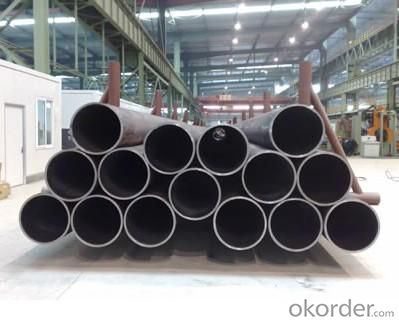
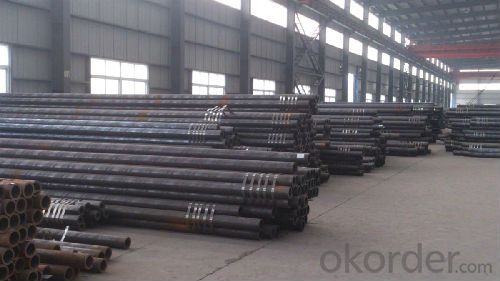
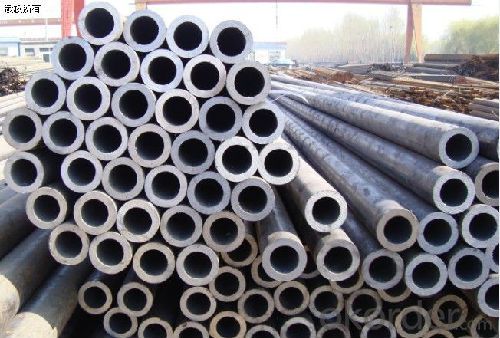
- Q: What is the significance of the schedule in stainless steel pipes?
- The schedule in stainless steel pipes refers to the thickness of the pipe walls. It is significant because it determines the pipe's strength, pressure resistance, and suitability for different applications. Different schedules are used for various purposes, such as high-pressure or corrosive environments, ensuring the appropriate performance and durability of the stainless steel pipes.
- Q: Stainless steel and stainless steel pipe inside and outside polishing off, what is the difference?
- The inside and outside polishing tubes are polished by the surface of the polished material, and they look like bright ones, just like the mirror surface. Mainly used in viscous liquid and gas moving equipment, such as printing and dyeing, pulp and other industries
- Q: Can stainless steel pipes be used for steam transportation?
- Yes, stainless steel pipes can be used for steam transportation. Stainless steel has excellent corrosion resistance and high temperature strength, making it suitable for carrying steam under high pressure and temperature conditions. The smooth surface of stainless steel pipes also reduces friction and minimizes the risk of clogging or scaling, ensuring efficient and reliable steam transportation. Additionally, stainless steel is a durable material that can withstand extreme conditions, making it a preferred choice for steam transportation in various industries such as power generation, chemical processing, and oil and gas.
- Q: What is the difference between 304H and 304L stainless steel pipes?
- The main difference between 304H and 304L stainless steel pipes lies in their carbon content. 304H has a higher carbon content, which gives it improved high temperature strength and resistance to sensitization. On the other hand, 304L has a lower carbon content, making it more resistant to corrosion in certain environments.
- Q: Can stainless steel pipes be bent or shaped easily?
- Yes, stainless steel pipes can be bent or shaped easily with the appropriate tools and techniques.
- Q: What is the maximum pressure rating for stainless steel pipes?
- The maximum pressure rating for stainless steel pipes can vary depending on factors such as the pipe size, wall thickness, and the specific grade of stainless steel used. However, stainless steel pipes are typically capable of handling high-pressure applications and can have maximum pressure ratings ranging from 1500 psi to 10,000 psi or more. It is important to refer to industry standards and consult with manufacturers to determine the exact maximum pressure rating for a specific stainless steel pipe.
- Q: Can stainless steel pipes be used for pharmaceutical storage tanks?
- Pharmaceutical storage tanks can utilize stainless steel pipes. The pharmaceutical industry highly favors stainless steel due to its exceptional resistance to corrosion, long-lasting nature, and ability to uphold cleanliness. Its non-reactive properties are advantageous in preventing contamination of stored pharmaceutical products. Furthermore, stainless steel pipes possess a smooth surface that is easy to clean, making them ideal for maintaining the necessary hygiene standards in pharmaceutical storage. Additionally, stainless steel can endure extreme temperatures and withstand the demanding cleaning procedures commonly employed in pharmaceutical facilities. Consequently, stainless steel pipes are widely employed in constructing pharmaceutical storage tanks to guarantee the safety and preservation of the stored pharmaceutical products.
- Q: What are the factors to consider when selecting stainless steel pipes for a specific application?
- When selecting stainless steel pipes for a specific application, several factors need to be considered to ensure the right choice is made. 1. Corrosion Resistance: Stainless steel is known for its exceptional resistance to corrosion, but different grades offer varying levels of protection against specific corrosive environments. The type of corrosive agents present in the application, such as chemicals, moisture, or high temperatures, should be carefully evaluated to select a stainless steel grade that can withstand them effectively. 2. Temperature and Pressure: Stainless steel pipes are used in a wide range of temperature and pressure conditions. The selected grade must have the necessary strength and resistance to handle the specific temperature and pressure levels required by the application. Higher temperatures may require grades with increased heat resistance, while high-pressure environments may benefit from pipes with higher tensile strength. 3. Material Compatibility: In some applications, stainless steel pipes may come into contact with other materials or substances, such as liquids or gases. It is crucial to consider the compatibility of the stainless steel with these materials to avoid any potential chemical reactions, contamination, or degradation. Compatibility testing or consulting with experts can help determine the best choice of material. 4. Size and Dimensions: The size and dimensions of the stainless steel pipes should match the requirements of the application. This includes considering the diameter, thickness, and length of the pipes. Proper sizing ensures optimal flow rates, structural integrity, and ease of installation. 5. Cost: Cost is always a factor to consider in any decision-making process. Different stainless steel grades vary in price, and it is essential to balance the desired properties with the available budget. While cost should not be the sole determining factor, it is important to find a stainless steel pipe that meets the required specifications without exceeding the allotted budget. 6. Standards and Certifications: Depending on the application, certain standards and certifications may be required, such as ASTM, ASME, or ISO. These standards ensure that the stainless steel pipes meet specific quality and performance criteria. It is crucial to select pipes that comply with the necessary standards and have appropriate certifications to ensure reliability and safety. 7. Maintenance and Durability: Consider the maintenance requirements and expected lifespan of the stainless steel pipes. Some applications may require regular cleaning, inspection, or maintenance, while others may need pipes with long-term durability and resistance to wear and tear. By carefully evaluating these factors, one can make an informed decision when selecting stainless steel pipes for a specific application, ensuring they meet the necessary performance, quality, and safety requirements.
- Q: What is the difference between the stainless steel pipe welded pipe and seamless pipe?
- Seamless tube is a strip of steel with a hollow cross section and no seams at all. The general is rolled into a cylindrical tube plate welding.
- Q: Can stainless steel pipes be used for wastewater systems?
- Yes, stainless steel pipes can be used for wastewater systems. Stainless steel is a highly durable and corrosion-resistant material, making it suitable for various applications, including wastewater systems. Stainless steel pipes can withstand the harsh and corrosive nature of wastewater, preventing leaks, cracks, and other damages that can compromise the system's integrity. Additionally, stainless steel pipes are easy to clean, maintaining hygiene standards in wastewater systems. Their longevity and resistance to rust also make them a cost-effective choice in the long run, as they require less maintenance and replacement compared to other materials. Overall, stainless steel pipes are a reliable option for wastewater systems, ensuring efficient and safe disposal of wastewater.
Send your message to us
ASME API 5L Seamless Stainless Steel Pipe
- Loading Port:
- Tianjin
- Payment Terms:
- TT or LC
- Min Order Qty:
- 25 m.t.
- Supply Capability:
- 10000 m.t./month
OKorder Service Pledge
OKorder Financial Service
Similar products
Hot products
Hot Searches
Related keywords
